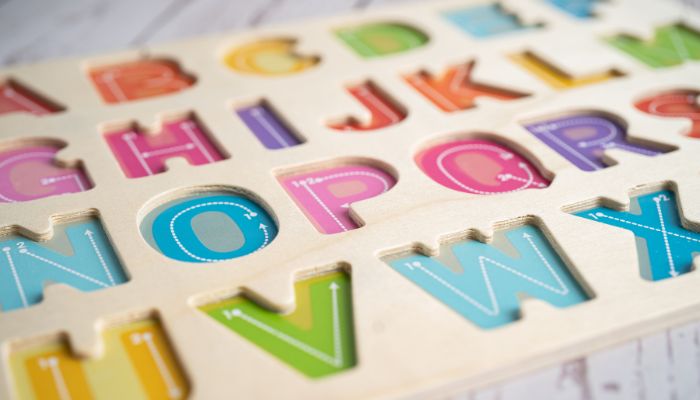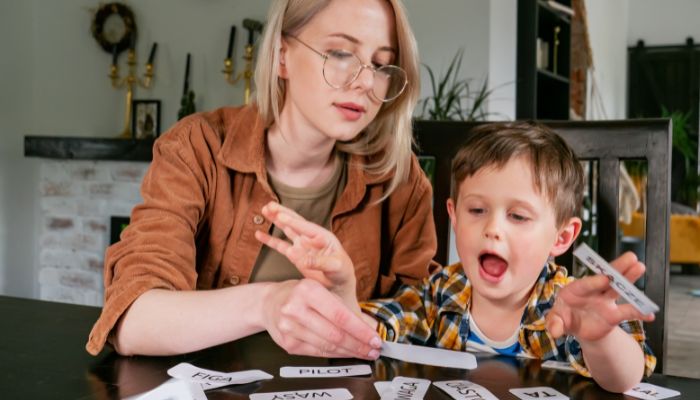Connectors are small words that make a big difference in how clearly we speak and write. They link ideas together, help stories and explanations flow smoothly, and make writing easier to follow, especially in school tasks.
If your child struggles to organize their thoughts or jumps from idea to idea in writing, mastering connectors can help them write more confidently and clearly.
In this guide, we’ll walk through the main types of connectors, explain when and how to use them, and share practical tips for building strong sentence skills- all in a way that’s easy for primary and lower secondary students to understand.
TL;DR;
-
Learning to use connectors correctly helps children organize their thoughts and link ideas smoothly, making both writing and speaking easier to follow.
-
Regular practice with connectors builds confidence in tasks like stories, essays, and NAPLAN writing by helping children structure their sentences clearly.
-
Targeted guidance and real examples teach children to avoid common mistakes, such as overusing basic connectors or choosing the wrong ones.
-
Fun, structured activities like games, prompts, and writing challenges develop strong sentence fluency, making grammar skills more natural and lasting.
What Are Connectors?
Connectors are words or short phrases that join parts of a sentence or link one sentence to another. They help show how ideas are related, whether something is adding more information, showing contrast, giving a reason, or describing what happens next.
Simple examples of connectors include:
-
and (to add something)
-
but (to show a difference)
-
because (to give a reason)
-
so (to show a result)
Teachers introduce connectors from as early as Year 2 or Year 3 because they help children write more clearly and logically. Without connectors, writing can feel jumpy or confusing. With them, ideas come together more smoothly.
Why Are Connectors Important in Writing and Speaking?
Connectors help children express their thoughts in a way that’s easier for others to follow. In writing, they improve the flow of ideas. In speaking, they help explain points clearly and link them together without confusion.
Here’s how connectors support your child’s development:
-
In writing tasks: Whether it’s a story, a persuasive letter, or an information report, using connectors helps structure sentences and paragraphs more effectively.
-
In oral presentations or classroom discussions: Connectors help your child explain their ideas clearly and stay on topic.
-
In NAPLAN and classroom assessments: Markers look for how well a student connects ideas, not just whether their grammar is correct.
For example:
Without connectors: “I went to the zoo. I saw a tiger. It was big. I liked it.”
With connectors: “I went to the zoo and saw a tiger. It was big, so I liked it.”
That small change makes a big difference.
Also read: Is NAPLAN Compulsory for Students?
Types of Connectors

In English, connectors are grouped based on the kind of link they create between ideas. Understanding each type helps children choose the right word when writing or speaking. Below are the most useful categories taught across Years 3-6, with simple definitions and real examples.
1. Addition Connectors
These help add more information to what has already been said.
Common examples: and, also, moreover, in addition, besides
Example sentence:
“We visited the museum, and we also went to the art gallery.”
When to use: In personal recounts, reports, or persuasive texts when adding points or reasons.
2. Contrast Connectors
Used when comparing ideas or showing a difference.
Common examples: but, however, although, whereas, yet
Example sentence:
“She enjoys swimming, but she doesn’t like diving.”
When to use: In discussions or narratives to show two sides of an idea, or when something unexpected happens.
3. Cause and Effect Connectors
These explain why something happened and what the result was.
Common examples: because, so, therefore, as a result, since
Example sentence:
“He was absent because he was feeling unwell.”
When to use: In explanation texts, persuasive writing, or personal responses.
4. Time and Sequence Connectors
These help put ideas in the right order or explain when something happened.
Common examples: then, next, afterwards, finally, before, later
Example sentence:
“First, we planned the project. Then, we created the presentation.”
When to use: In recounts, instructions, and procedural writing.
5. Condition Connectors
Used to show that something might happen depending on another action or situation.
Common examples: if, unless, provided that, in case
Example sentence:
“You can join the game if you finish your work.”
When to use: In problem-solving tasks or when explaining choices and rules.
Want to help your child use connectors with ease and confidence?
Try the FunFox Way
Common Mistakes and How to Avoid Them
Learning to use connectors is important, but many children make similar mistakes while practicing them. Here’s what to watch for and how to help your child use connectors more effectively.
1. Using Too Many in One Sentence
Example (incorrect): “I went to the park and then I saw my friend and we played and we ate and we came home.”
Fix: Encourage your child to split long chains into shorter, clearer sentences.
Improved: “I went to the park. Then I saw my friend. We played and later had a snack.”
2. Repeating the Same Connector Often
Children often rely on and, but, or because too much.
Fix: Help them explore alternatives like also, however, so, or although. Use a word bank during writing time to offer variety.
3. Choosing the Wrong Type of Connector
Sometimes students mix up ideas. For example, using but instead of because.
Example (confusing): “I was tired, but I didn’t sleep well.”
Fix: Show how different connectors change the meaning.
Corrected: “I was tired because I didn’t sleep well.”
4. Using Connectors at the Start of Every Sentence
This often happens in early paragraph writing.
Fix: Remind your child that connectors are useful, but not needed in every line. Encourage balance between connected and simple sentences.
5. Forgetting Punctuation Around Connectors
Words like however or therefore often need commas when used in the middle or at the start of a sentence.
Fix: Practice writing a few sentences with punctuation included. Reading aloud can help children hear when a pause (and comma) is needed.
Helping your child spot these patterns early makes their writing clearer and gives them more control over how they express ideas both on paper and in class discussions.
Read: Benefits of Reading Aloud for Children
Practice Tips to Build Confidence with Connectors

These practical strategies are designed for children aged 7-12. They encourage confident use of connectors in writing and speech without making it feel like a grammar lesson.
1. Keep a Simple Connector Chart Nearby
Create a basic table with columns for different connector types:
-
Addition (and, also, in addition)
-
Contrast (but, however, although)
-
Cause and effect (because, so, therefore)
-
Sequence (then, next, finally)
Let your child keep it next to their writing book. It’s a visual reminder that there are different ways to link ideas, not just using and repeatedly.
2. Connector Fill-in-the-Gap Game
Write short sentences and leave the connector out. Ask your child to choose the right one from a small list.
Example:
“I wore my coat ___ it was cold.”
Options: (and, because, but)
Correct: because
You can create a few of these per week as a quick warm-up before homework.
3. Sort Connectors into Groups
Cut out connector words and ask your child to sort them under headings: Addition, Contrast, Time, etc.
This hands-on activity helps them understand that different connectors do different jobs.
4. Use Speaking Prompts with Specific Connectors
Ask your child to speak about something familiar, like their school day or weekend, but include specific connectors.
Prompt example:
“Tell me what you did yesterday using first, then, and finally.”
This helps them apply connectors naturally, not just in written tasks.
5. One-Paragraph Challenge
Set a mini-writing challenge:
“Write one paragraph about your favourite sport using at least one of each: an addition connector, a contrast connector, and a cause connector.”
This teaches them how to mix different types of connectors in a real paragraph, just like in NAPLAN writing.
6. Highlight Connectors in a Book or Article
Choose a short, age-appropriate passage and highlight all the connectors together. Then discuss:
-
Which ones are used most often?
-
Do they come at the start or middle of sentences?
-
What effect do they have on meaning?
Children learn a lot by observing how good writing flows.
These methods make it easier for children to understand, recognize, and apply connectors. They’re simple, but effective when done regularly, especially with a bit of feedback.
Read: Understanding Orthographic Mapping in Reading
How FunFox Helps Build Stronger Sentence Skills
Many children know basic grammar rules but struggle to use them well in actual writing. Connectors, for instance, often get repeated or used in the wrong context. The key is not more drills; it’s meaningful, supported practice. That’s where the FunFox Writers Club stands out.
This online creative writing program is designed for children in Grades 1 to 7, with sessions tailored to their age and skill level. Through a mix of group writing tasks, language games, and structured feedback, students gain confidence in expressing ideas clearly, including when and how to use the right connectors.
What makes the program effective for fluency and sentence structure?
-
Small group sessions (max six per class): This allows teachers to guide each child’s sentence-level development closely
-
Weekly one-hour lessons: Delivered live via Zoom, making learning consistent and easy to schedule
-
Built-in feedback: Teachers offer real-time suggestions on writing flow, connector use, punctuation, and grammar
-
Interactive worksheets and digital games: These help reinforce how to link ideas using various connector types
-
Catch-up access: Recorded sessions make it easy to revisit key writing techniques later
Some students join because they find writing difficult and need help building structure. Others come in loving to write and want to take their skills to the next level. Either way, they gain real tools for sentence fluency, organization, and clarity. Click here to join a free trial class.
Curious how our program can support your child’s writing journey?
Book a Call
FAQs
1. At what age should my child start using connectors?
Children are usually introduced to basic connectors like and, but, and because by Year 2. From Year 3 onwards, they’re expected to expand their use with a wider range, like however, so, and then, especially in structured writing tasks.
2. Are connectors part of the Australian curriculum?
Yes. The curriculum across primary years includes specific outcomes related to sentence fluency, grammar, and cohesion- all of which involve using connectors effectively in both written and spoken texts.
3. What’s the best way to help my child remember when to use which connector?
Group them by type (e.g., addition, contrast, cause) and use simple examples during writing or conversation. Word banks, sentence starters, and regular writing practice help these become natural over time.
4. My child uses and too often. Is that normal?
Very. And it is often a go-to connector in early writing. Over time, they’ll learn to replace it with more specific words like also, next, or but. Encourage this by gently pointing out repetitive use and offering options.
5. Do connectors matter in creative writing, too, or just reports?
They’re important in all types of writing, including stories. Even in narratives, connectors help show the order of events (then, after that), reasons (because), and contrast between characters or actions (although, but).
6. Can speaking activities improve connector use in writing?
Absolutely. When children practise using connectors while talking about everyday things like recounting their day or explaining a choice, they become more confident applying them in writing too.v















